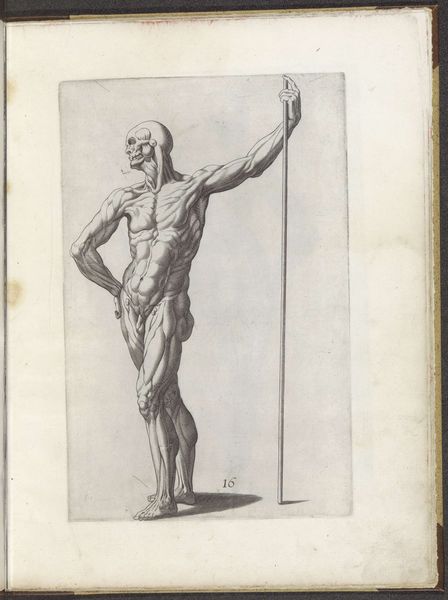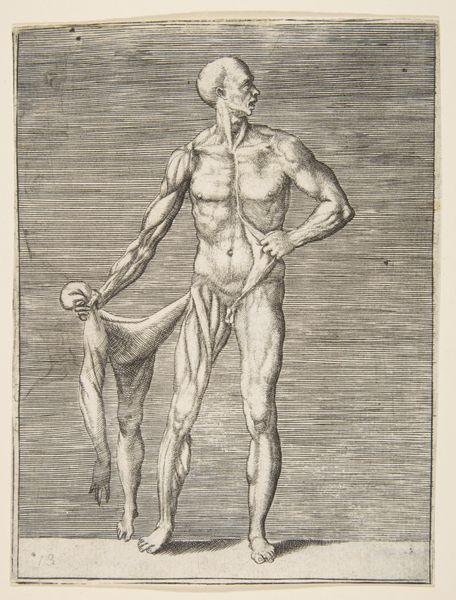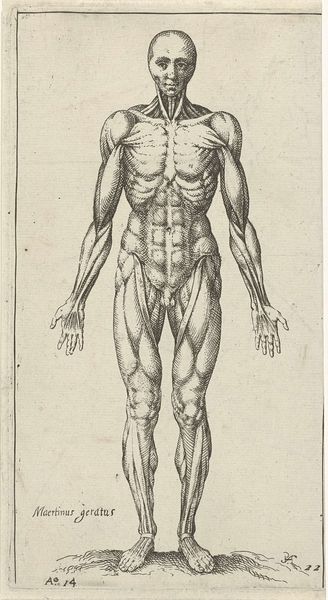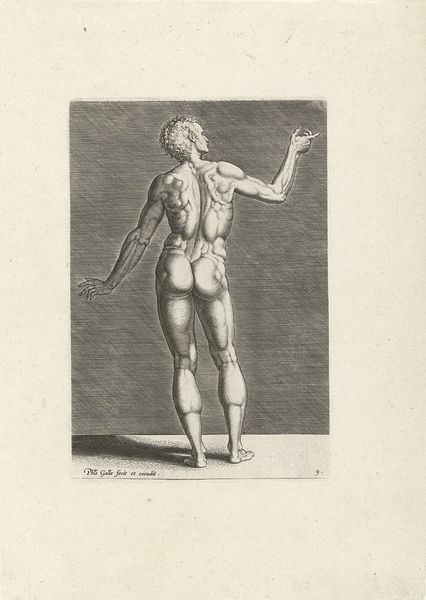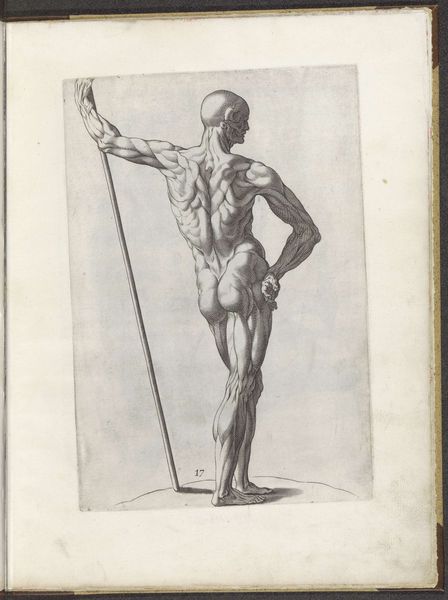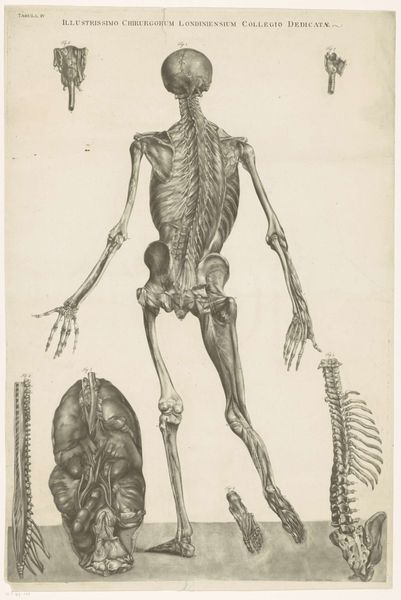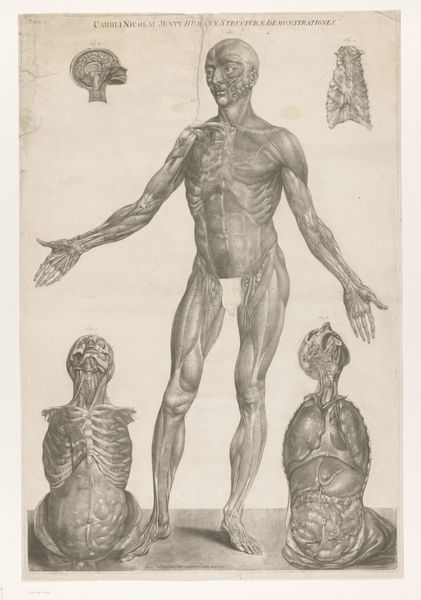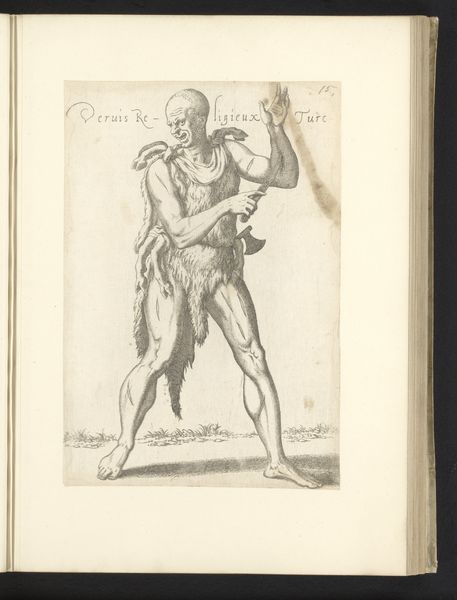
Dimensions: height 235 mm, width 160 mm
Copyright: Rijks Museum: Open Domain
Editor: This is Philips Galle's "Ecorché, naar rechts," from 1589, currently at the Rijksmuseum. It's an engraving, showing a flayed figure with meticulously rendered musculature. The level of detail is amazing! What aspects of this piece strike you most? Curator: Considering this engraving, I'm immediately drawn to the labor embedded within it. Look at the fine lines; imagine the sheer time and skill invested in creating such a detailed representation. Engravings like this weren’t merely artistic endeavors, but integral components in the dissemination of anatomical knowledge. What do you think about the means through which knowledge of the body was materialized and circulated in printmaking at that time? Editor: That's fascinating. It almost makes the print itself a kind of scientific instrument, but crafted by hand. Does the "craft" aspect then challenge how we classify the work as "high art" given its educational intent? Curator: Precisely! It raises crucial questions about artistic production within a specific socio-economic context. Who commissioned it? For what purpose? Was it viewed as art, science, or both? I'm interested in the tension between the aesthetic object and its function as a commodity in a burgeoning market for medical knowledge. Note that printing these things also generated very specific working conditions, and demanded both skilled and unskilled labourers who facilitated that knowledge transfer. The raw materials – metal plates, inks, paper – all point to a network of production. Editor: I hadn't considered the production process and labor so explicitly. It does give me a broader perspective on how knowledge and art intertwine. Curator: Absolutely. Thinking about the social and material circumstances of its creation allows us to go beyond admiring the image to understanding its role within a wider system of knowledge and consumption. This way, it moves beyond pure artistic skill, towards something like societal skill – labour’s role in making anatomical research open to those who wanted to study it further.
Comments
No comments
Be the first to comment and join the conversation on the ultimate creative platform.


